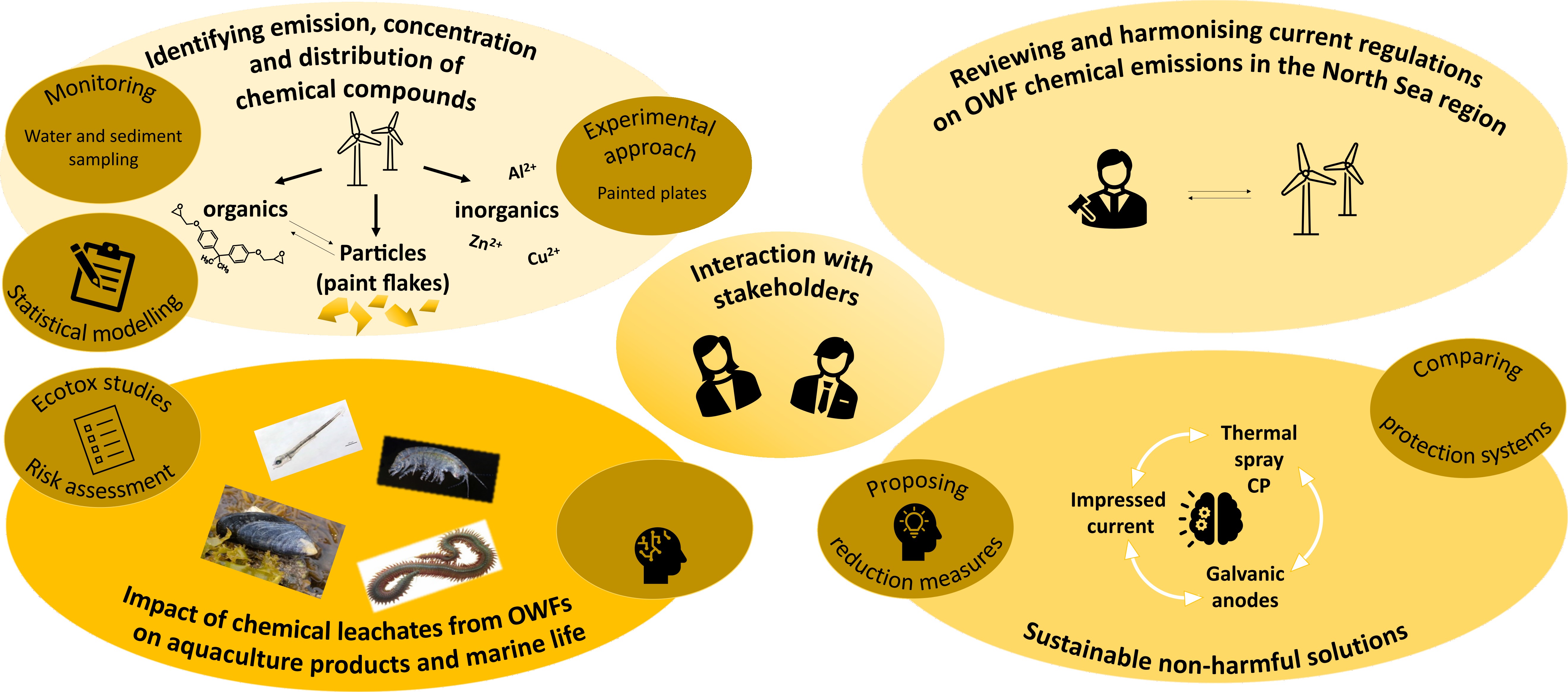Goals
Offshore wind farms (OWFs) are essential for the energy transition towards renewable energy. To protect wind turbines from the harsh conditions of the marine environment, different coatings and corrosion protection systems are used. Anemoi will map the chemical emissions related to these protective systems and assess their impact to the marine ecosystem. Solutions to reduce chemical emissions will be proposed. Additionally, Anemoi will promote international harmonisation of OWF environmental regulations and evaluate effects on the quality of seafood cultivated at OWFs.
Anemoi Work Plan
Mapping regulatory differences on chemical emissions of OWFs
To compile an overview of current regulations on OWF chemical emissions in the North Sea region and establish a framework towards regional harmonisation of regulations.
Chemical and particulate emissions from OWFs
To characterise the emission, levels and distribution of priority chemicals and paint flakes from OWFs by combining experimental and modelling approaches.
Impact of chemical leachates from OWFs on aquaculture products and marine life
To determine biological effects of chemical emissions from OWFs and to assess the impact on marine life. By assessing effects on seafood quality, opportunities for aquaculture at OWFs will be evaluated.
Solutions towards OWFs with non-harmful chemical impact
To suggest the most sustainable solutions regarding OWF chemical emissions, comparing different corrosion protection systems and proposing reduction measures for different emissions sources.

Work plan of the Anemoi Project
Research Approach
To assess the chemical emissions associated with OWFs, sediment, water and biota samples will be taken at and near OWFs. The impact of chemical contaminants detected on site will be evaluated and current knowledge gaps will be addressed. In consultation with stakeholders, approaches to reduce chemical emissions will be proposed. Current gaps in the legislation will be addressed on an international level.
Valorisation
There is a lack of knowledge on chemical emissions of OWFs. The Anemoi project will address this knowledge gap and propose solutions to minimise chemical emissions. There will be a strong focus on collaboration between different sectors, in order to create a knowledge base to minimise the impact of OWFs on the marine ecosystem on the international level. This will facilitate opportunities for aquaculture at and around OWFs.
